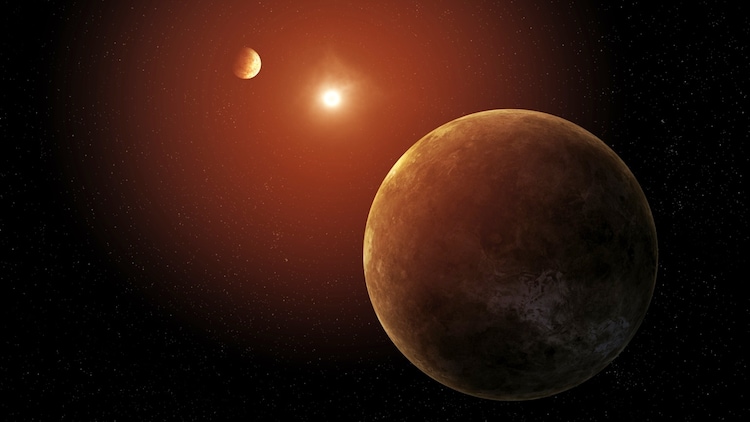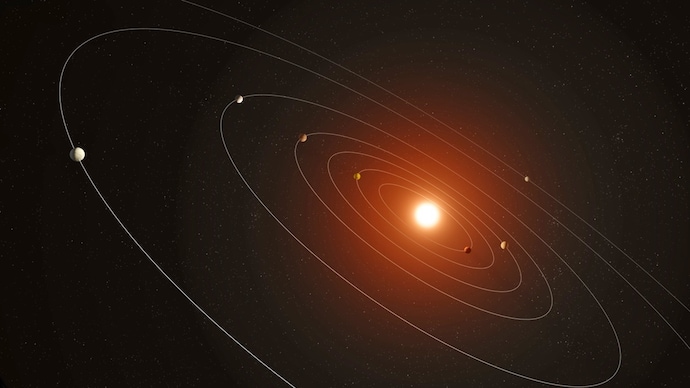
Alien solar system with seven planets discovered. All 7 are bigger than Earth
This remarkable discovery is among the highlights of a new Kepler catalogue, which contains nearly 4,400 planet candidates, including over 700 multi-planet systems.

In Short
- This extraordinary system is named Kepler-385
- All seven of its planets are larger than Earth
- At the heart of the Kepler-385 system lies a Sun-like star
The biggest question that astronomers want to find answers to is are we alone in the universe? A new discovery has raised the curiosity even more.
In a groundbreaking revelation, Nasa's retired Kepler space telescope has unveiled a sweltering system of seven planets, each receiving more radiant heat from their host star than any planet in our solar system.
This extraordinary system, named Kepler-385, is unique in that all seven of its planets are larger than Earth but smaller than Neptune, setting it apart from our immediate neighbours.
Kepler-385 is one of the few known planetary systems to contain more than six verified planets or planet candidates. This remarkable discovery is among the highlights of a new Kepler catalogue, which contains nearly 4,400 planet candidates, including over 700 multi-planet systems.
"We've assembled the most accurate list of Kepler planet candidates and their properties to date," said Jack Lissauer, a research scientist at Nasa's Ames Research Center in California's Silicon Valley. Lissauer, who is also the lead author on the paper presenting the new catalog, added that this catalog would enable astronomers to delve deeper into the characteristics of exoplanets.
At the heart of the Kepler-385 system lies a Sun-like star, approximately 10% larger and 5% hotter than our Sun. The two inner planets, slightly larger than Earth, are likely rocky and may possess thin atmospheres.
The other five planets are substantially larger, each with a radius about twice the size of Earth's, and are expected to be cloaked in thick atmospheres.
The ability to describe the properties of the Kepler-385 system in such detail is a testament to the quality of this latest catalog of exoplanets. Unlike previous catalogs, which aimed to gauge the prevalence of planets around other stars, this comprehensive list provides accurate data about each system, making discoveries like Kepler-385 possible.
The new catalogue uses improved measurements of stellar properties and calculates more accurately the path of each transiting planet across its host star. This combination illustrates that when a star hosts several transiting planets, their orbits tend to be more circular compared to systems with only one or two planets.
Kepler's primary observations concluded in 2013, followed by an extended mission, known as K2, which persisted until 2018. The data collected by Kepler continues to unravel astonishing revelations about our Milky Way galaxy. With prior confirmation that planets outnumber stars, this new study enhances our understanding of the diverse worlds beyond our solar system.
The details of the findings have been published in The Journal of Planetary Science.
